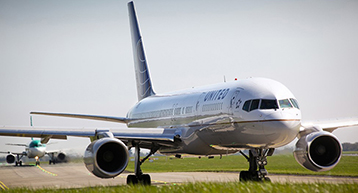Managing Noise

Dublin Airport, like most airports, is subject to International Civil Aviation Organisation (ICAO) rules and procedures. ICAO works with 193 Member States and industry groups to reach consensus on international civil aviation standards and recommended practices and policies in support of a safe, efficient, secure, economically-sustainable and environmentally-responsible civil aviation sector.
Balanced Approach
The ICAO framework relating to aircraft noise is the Balanced Approach, which aims to strike a balance between the needs of the aviation industry to develop and grow and the need to minimise and reduce noise in communities surrounding airports. The framework recognises that noise challenges are unique to each airport and a tailored approach needs to be adopted. It makes clear, that each airport should assess the noise situation specific to its operations and develop appropriate measures to manage noise in line with the Balanced Approach.
The National Aviation Policy (NAP) for Ireland, published in 2015, states that Ireland will implement a “Balanced Approach” to noise management at Irish airports. Dublin Airport is already undertaking a wide range of measures to avoid and mitigate noise impacts in line with this approach.
There are four pillars of the Balanced Approach:
Over the past 20 years the models and types of aircraft using Dublin Airport have evolved with changing profiles in passengers and business models and the introduction of more stringent noise standards for aircraft. These standards are developed by the ICAO and enforced throughout the EU.
The ICAO Noise ‘Chapter’ defines specific noise performance criteria to which aircraft must be certified. Since 2002, Chapter 2 aircraft are banned from use in Europe and the vast majority of aircraft operating in the skies above the EU are now Chapter 4, with an increasing number of Chapter 14 aircraft entering the fleet as airlines take delivery of newer aircraft.
In 2018, over 90% of aircraft using Dublin Airport were the quietest types (Chapter 4 and 14), compared to 83% in 2008 and 46% in 2003Dublin Airport has benefitted from a far-sighted planning process that has kept the approaches to the runways largely clear of development, limiting noise exposure. This has been achieved by the implementation of established airport noise and public safety zones during the statutory planning process. Fingal County Council’s County Development Plan 2011-2017 defines ‘inner’ and ‘outer’ noise zones; the inner zone limits new residential development and other noise-sensitive uses, and the outer zone controls inappropriate development and requires the developer to provide noise insulation where appropriate.
Along with our airport stakeholders, we have implemented a range of operational procedures to minimise noise at Dublin Airport. These include:
- Noise Preferential Runway usage: aircraft must use the preferred runway under specific conditions and time of day/night. These are selected for noise abatement purposes, the intent being to utilise whenever possible the runways which enable aircraft to avoid noise-sensitive areas during the initial departure and final approach phases of flight.
- Environmental Noise Corridors: aircraft must stay within designated noise corridors on arrival and departure to minimise noise impact.
- Noise Abatement Procedures: these are specific rules on how aircraft should perform take-off climbs to ensure that noise is minimised.
- Continuous Descent Approach: this reduces the noise experienced on the ground by reducing the overall thrust required during the initial descent and keeping aircraft at higher altitudes for longer.
- Reverse thrust is not permitted at night, unless required for safety reasons.
- Engine test runs are only permitted at certain times to minimise ground noise.
- There are limitations on the use of the cross-wind runway.
A fundamental requirement of the Balanced Approach is that when determining the most appropriate combination of noise mitigation measures for a given airport, operating restrictions should only be introduced after consideration of the other three elements.
There are currently no operating restrictions in place at Dublin Airport however, under the grant of permission for North Runway, new operating restrictions are due to be implemented. daa will be making an application to amend these conditions due to the impact they will have on the current and future operational capability of the airport.
Responsibilities
Various stakeholders at the airport contribute to the overall management of noise associated with airport operations.
The Irish Aviation Authority (IAA)
All aircraft arriving and departing Dublin Airport come under the direction of the IAA, which provides air traffic control services in Ireland and is also responsible for the control and routing of aircraft. The Noise & Flight Track Monitoring Service of daa has regular meetings with the IAA to continuously review the track keeping of aircraft in the vicinity of the airport.
Airlines
There are 56 airlines operating at Dublin Airport. All have modern aircraft fleets that meet Chapter 3, Chapter 4 and/or Chapter 14 ICAO noise standards. Many of these airlines have significantly updated their fleets in recent years, with older aircraft being phased out in favour of more fuel efficient and quieter aircraft.
Airport
Aircraft taking off from Dublin Airport are required to follow specific flight paths called Noise Preferential Routes (NPRs), also known as flight corridors, unless directed otherwise by air traffic control. These have been designed to limit noise impact by avoiding overflight of built up areas where possible. The airport tracks how aircraft fly within these flight paths.
If a noise complaint is made to Dublin Airport, the flight path is reviewed to assess whether the aircraft was off-track. The complaint may be escalated to the IAA for further investigation if required. To find out more about the noise complaints procedure
click here.
daa shares data from the Flight Tracking Monitoring System with local stakeholders through the Dublin Airport Environmental Working Group (DAEWG). This group brings together local
communities and representatives from daa and the IAA under the guidance of an independent Chair to discuss environmental topics relevant to the airport and its community. This forum has been in place (in various formats) for over 10 years and continues
to provide valuable engagement for all parties. To find out more about the DAEWG click here.
